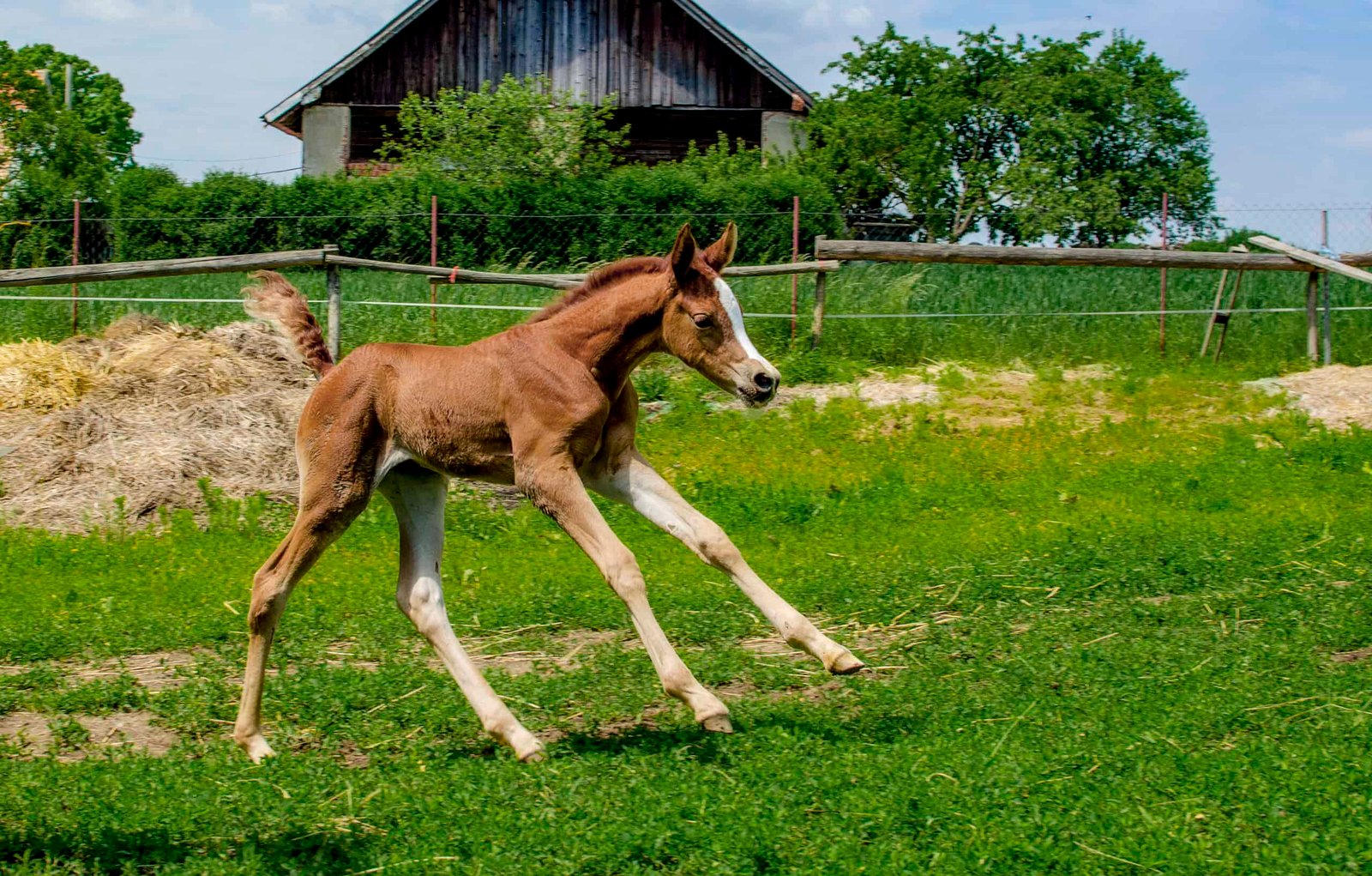When foals are born, they come into the world with remarkably long and strong legs. These long legs are a vital part of their ability to stand, walk, and run shortly after birth. However, one interesting fact about foals is that their legs don’t grow in length as they mature. Instead, their overall size increases through the growth of their bodies, but the length of their legs remains mostly unchanged after birth. Let’s explore why this happens and what it means for a foal’s development.
1. Foals Are Born with Long Legs for a Reason
When foals are born, they already have legs that are about 80-90% of their adult size. This is because, in the wild, foals must be able to stand and run quickly to escape predators. The long legs provide the foal with the necessary speed and agility to stay safe. Their physical design is tailored for survival, and having long legs at birth is essential to their ability to move with their mother and the herd right away.
2. Growth Happens Mostly in the Body
While foals’ legs appear long, their bodies, including their ribcage and overall muscle structure, are still developing. As foals grow, their body size increases more than their leg length. Their bones become thicker, their muscles become stronger, and their overall proportions shift, but the length of their legs remains relatively stable after birth. This is because the main growth occurs in the bones and muscles of the torso and other parts of the body.
3. Leg Bones Are Already Fully Developed at Birth
At birth, the bones in a foal’s legs are already well-developed and mostly formed. While their bones are not fully ossified (hardened), they are ready to bear weight and support the foal’s movements. The growth plates in the legs (the areas where the bones lengthen) close relatively early compared to other parts of the body. This means the legs stop growing in length much sooner than the rest of the body.
4. Why Legs Don’t Grow in Length After Birth
The primary reason foals’ legs don’t grow significantly in length after birth is that their skeletal development is different from that of humans. In horses, the majority of skeletal growth takes place before birth. While their legs do experience some growth during the first few months after birth, it’s mostly in thickness and strength rather than in length. This ensures that foals can stand and begin to move shortly after birth without compromising the stability of their legs.
5. The Role of Joint Development
While the length of a foal’s legs doesn’t change much, the joints and muscles around the legs do continue to grow and develop. Over time, as foals gain strength, their joints become more flexible, and they become more coordinated. However, the actual bones in the legs have already reached their full length by the time the foal is born, with growth mainly focused on thickness and strength to handle the increasing weight of the growing animal.
6. Impact on the Foal’s Growth and Development
The lack of significant leg lengthening means that foals go through a rapid period of growth in the first few months, where the focus is on strengthening their body rather than elongating their limbs. This gives foals the necessary stamina and coordination they need to thrive as they continue to grow into adult horses. Although the legs won’t grow much in length, their muscular and skeletal systems develop, allowing them to carry a rider and perform various tasks as they mature.
7. Differences in Growth Between Foals and Other Species
Foals’ leg growth is quite different from that of other animals. In humans and many other mammals, the legs grow longer as the body grows. But in horses, this early development of the legs is a key adaptation to their survival needs. Since horses are prey animals, they must be able to run quickly to evade danger, and having legs that are already nearly full-grown at birth gives them a major advantage in this regard.
8. Skeletal Maturity and Health
Even though foals’ legs don’t grow longer, their bones still need time to mature and harden. As the foal ages, the bones in their legs solidify, a process that is crucial for their long-term health and ability to carry weight. This is why proper nutrition, exercise, and veterinary care are essential during the foal’s development to ensure their bones and joints remain healthy and strong.

